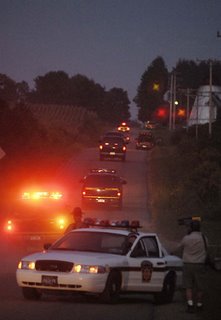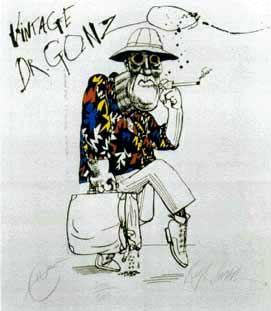Bucky and Clyde
 Amid the cheers and fanfare one would expect at a high school pep rally, state troopers plucked Bucky Phillips from a remote plot in Pennsylvania, taking into custody the fugitive who shot three cops and eluded their clutches for nearly a half-year. Phillips’ capture brings to a close the sad saga that took a turn for the worse in August, when he nailed two troopers from
Amid the cheers and fanfare one would expect at a high school pep rally, state troopers plucked Bucky Phillips from a remote plot in Pennsylvania, taking into custody the fugitive who shot three cops and eluded their clutches for nearly a half-year. Phillips’ capture brings to a close the sad saga that took a turn for the worse in August, when he nailed two troopers from But even prior to the September shooting, Bucky had achieved near cult-hero status among the lower-income communities in
As his run continued unabated, Phillips became symbolic of the growing dislike and distrust of the law along a stretch of society largely devoid of hope. This is likely why he was greeted with such zeal during the early days of the hunt and how for so long he slipped through the noose the state police were trying to drape around his neck.
Immediately after the late-August shootings, the media picked up on Bucky fever, which was proliferating throughout truck stops and local diners as the days went by. Some menus offered the Buckey burger, while others sold t-shirts boasting catchy  slogans. Over and over, the television news casters asked the question, why would anyone help this lawless man, much less cheer on his continued flight?
slogans. Over and over, the television news casters asked the question, why would anyone help this lawless man, much less cheer on his continued flight?
Because Phillips, in some misguided way, was a vesicle for a down-and-out corner of society to strike back at the establishment that either laid them off or repossessed the family property or exacted any number of bad scenarios that typically befall the lower and lower-middle class during troubled times.
For them, Bucky was a man made into a criminal by the establishment. And when the establishment tried to lock him away, he struck back with precision and ferocity. This isn’t to say that this is a new phenomenon, rather one that occurs whenever times get tight and the public perception of government swings to the negative.
Decades ago, there was another pair of fugitives that similarly befuddled authorities at every step, largely because they were so romanticized by the public. Bonnie Parker and Clyde Barrow were a notorious duo who blazed a path of death through the center of the
 For Phillips, the one wrong move was shooting at the state troopers and killing one, which had the effect of polarizing his previously intrigued support base. Otherwise, he might still be on the lam. The Barrow Gang made a similar mistake toward the end of their run in 1934 with the killing of two Texas troopers. But they weren’t afforded the liberty of walking out with their hands up.
For Phillips, the one wrong move was shooting at the state troopers and killing one, which had the effect of polarizing his previously intrigued support base. Otherwise, he might still be on the lam. The Barrow Gang made a similar mistake toward the end of their run in 1934 with the killing of two Texas troopers. But they weren’t afforded the liberty of walking out with their hands up.


0 Comments:
Post a Comment
<< Home